#nature colombia 2021
Text
A Snake or Two?
Scour the news for an entirely uninteresting story. Consider how it connects to your life. Write about that.
I read this prompt yesterday, and I had nothing, but because I am an avid news junkie, I wanted to write a post. Today, I was skimming the news, and there was a story I immediately felt a kinship with. A snake lands on this woman’s arm! A hawk attacks! Last year in Colombia, where I live…

View On WordPress
#animal encounters#Colombia#Colombia travel#dailyprompt#dailyprompt-2021#expat life#glamping life#nature#snakes#the andes mountains#the jungle
0 notes
Text
Emerald Spectacles from India, c. 1620-1660 CE: the lenses of these spectacles were cut from a single 300-carat emerald, and it was believed that they possessed mystical properties

These eyeglasses are also known by the name "Astaneh-e ferdaws," meaning "Gate of Paradise," based on the symbolic associations between the color green and the concept of spiritual salvation/Paradise. That symbolism (which is rooted in Islamic tradition) was especially popular in Mughal-era India, where the spectacles were made.

The lenses were crafted from two thin slices of the same emerald. Together, the lenses have a combined weight of about 27 carats, but given the precision, size, and shape of each lens, experts believe that the original emerald likely weighed in excess of 300 carats (more than sixty grams) before it was cleaved down in order to produce the lenses. The emerald was sourced from a mine in Muzo, Colombia, and it was then transported across the Atlantic by Spanish or Portuguese merchants.
Each lens is encircled by a series of rose-cut diamonds, which run along an ornate frame made of gold and silver. The diamond-studded frame was added in the 1890s, when the original prince-nez design was fitted with more modern frames.
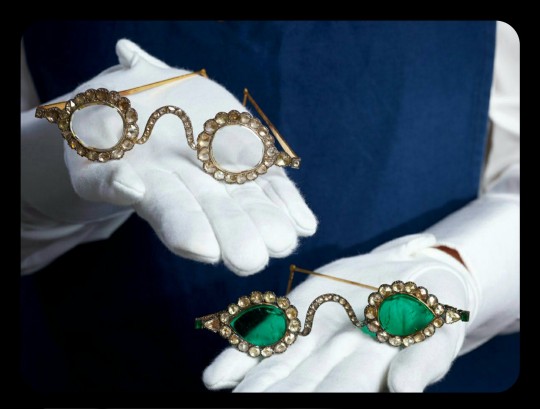
The emerald eyeglasses have long been paired with a second set of spectacles, and they were almost certainly commissioned by the same patron. This second pair is known as "Halqeh-e nur," or the "Halo of Light."
The Halo of Light features lenses that were made from slices of diamond. The diamond lenses were cleaved from a single stone, just like the emerald lenses, with the diamond itself being sourced from a mine in Southern India. It's estimated that the original, uncut diamond would have weighed about 200-300 carats, which would make it one of the largest uncut diamonds ever found.

The lenses are so clear and so smoothly cut that it sometimes looks like they're not even there.
Both sets of spectacles date back to the mid-1600s, and it's generally believed that they were commissioned by a Mughal emperor or prince. The identity of that person is still a bit of a mystery, but it has been widely speculated that the patron was Shah Jahan -- the Mughal ruler who famously commissioned the Taj Mahal after the death of his wife, Mumtaz Mahal. Shah Jahan did rule as the Mughal emperor from about 1628 to 1658.
The emerald and diamond lenses may have been chosen for symbolic, sentimental, and/or cultural reasons, or they may have been chosen simply because they're pretty and extravagant; the original meaning and purpose behind the design is still unclear. Experts do believe that the eyeglasses were designed to be worn by someone, though.
At times, it was believed that the spectacles had spiritual properties, like the ability to promote healing, to ward off evil, to impart wisdom, and to bring the wearer closer to enlightenment. Those beliefs are largely based on the spiritual significance that emeralds and diamonds can have within certain Indic and Islamic traditions -- emeralds may be viewed as an emblem of Paradise, salvation, healing, cleansing, and eternal life, while diamonds are similarly associated with enlightenment, wisdom, celestial light, and mysticism.

The Gate of Paradise and the Halo of Light were both kept in the collections of a wealthy Indian family until 1980, when they were sold to private collectors, and they were then put up for auction once again in 2021. They were most recently valued at about $2 million to $3.4 million per pair.
Sources & More Info:
Sotheby's: Mughal Spectacles
Architectural Digest of India: At Sotheby's auction, Mughal-era eyeglasses made of diamond and emerald create a stir
Only Natural Diamonds: Auspicious Sight & the Halqeh-e Nur Spectacles
The Royal Society Publishing: Cleaving the Halqeh-Ye Nur Diamonds
Gemological Institution of America: Two Antique Mughal Spectacles with Gemstone Lenses
Manuscript: From Satan's Crown to the Holy Grail: emeralds in myth, magic, and history
CNN: The $3.5 million Spectacles Said to Ward off Evil
BBC: Rare Mughal Era Spectacles to be Auctioned by Sotheby's
#history#archaeology#artifact#mughal#india#17th century#art#emerald#diamond#glasses#indian lore#islam#religion#mysticism#indian history#anthropology#spirituality#fashion
5K notes
·
View notes
Text
Hmm. Alarming trend in mass incarceration in Central America.
Also: Very disingenuous wordplay here.

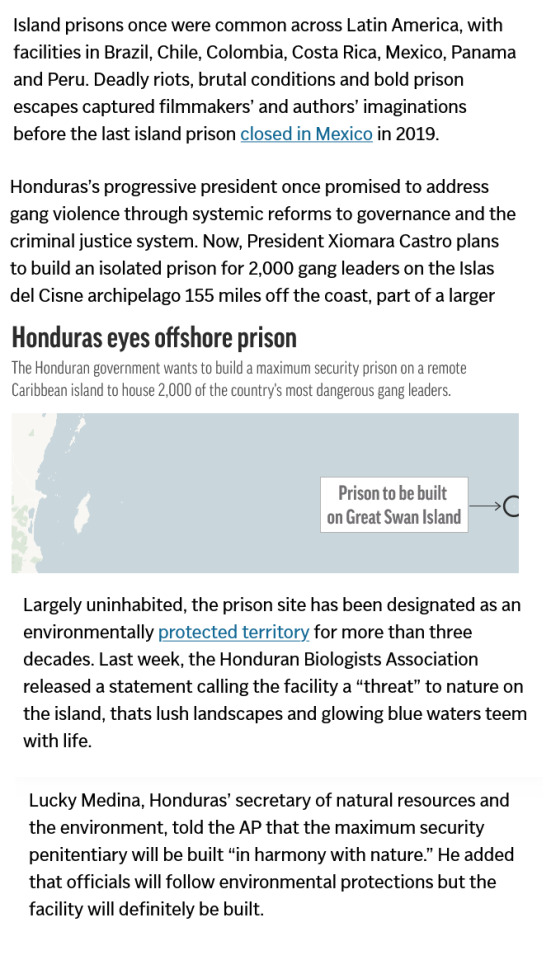
Where do we begin?
-- Very disingenuous for multiple outlets to run with "the West”. Though this initial AP article does specify that this refers to the Western Hemisphere, the choice to run headlines with “West” kinda implies that there are no other island prisons in “The West” (as in the European Union, the United States, Australia, etc.).
-- One of the most infamous incarceration schemes on the planet is Australia’s “Pacific Solution,” a “solution” to refugee migration centered on the imprisonment of asylum seekers on island prisons, including the infamous prisons at Nauru and Manus, both opened initially in 2001, and re-fortified after 2012. (Nauru is extremely isolated, in the South Pacific, 3000 kilometers away from the Australian coast; the Manus detention centre is far away off the northeast coast of Papua.) Since 2012, over 3,125 people have been sent to Nauru while over 4,180 people have been sent to Manus. (The “last refugee held on the Pacific island of Nauru under Australia’s offshore detention policy” was “evacuated” to mainland Australia only on 24 June 2023, not even a month prior to this headline.)
-- Obviously the EU incarcerates refugees on Mediterranean islands, notoriously at Moria on Lesbos, whose international reputation as the home of Sappho has been supplanted by its reputation as a de facto prison for asylum seekers. In October 2015, over 10,000 people landed on Lesbos in just one day. In 2017, the island averaged 2,500 arrivals per month. By 2019, humanitarian investigations showed that over 10,000 people were being held in a facility with a maximum capacity of 3,000. In 2020, fires left over 12,000 refugees on the island without shelter. By December 2021, Doctors Without Borders raised alarm that over 2,200 refugees were living in “dire” conditions on the island. As of early 2023, Lesbos (along with Kos, Leros, Chios, and Samos) is hosting over 4,500 people who are stuck in “reception and identification centers.”
-- And in the Western Hemisphere? The US prison at Guantanomo, also on the coast of an island in this same sea.
-- One of the most notorious island prisons was the early twentieth century French penal colony on the periphery of the Caribbean region at Guiana (run by a France, a “Western” power, in the Western Hemisphere), known internationally as “Devil’s Island.”
-- The federal government says the prison will be built “in harmony with nature.”
-- A prison ... in harmony with nature.
-- An island prison in the Caribbean, a region fundamentally and intimately connected to centuries of imprisonment, plantations, Indigenous genocide, antiBlackness, racial castes, and chattel slavery, all achieved and enforced through the bounded, isolated geographic containment structure allowed by islands.
-- And this is extra-worrying, because it seems it’s a regional trend, evidently for Honduras, El Salvador, and Colombia.
-- Merely a few days before this headline about Honduras, international outlets were profiling Honduras’s direct neighbor, El Salvador, with headlines like “Inside El Salvador’s new ‘mega prison’” (Al Jazeera) and, within the past couple months, headlines like “Prisoners are being tortured to death in El Salvador’s prisons” (VICE News).
-- From less than a week before this AP headline, we have BBC: “El Salvador’s secretive mega-jail.”



-- Don’t forget nearby Tapachula’s detention of asylum seekers.


Still discussing implementation of literal island prisons despite our collective familiarity with carceral archipelagoes.


486 notes
·
View notes
Text
COOL ZOOLOGY STORIES OF 2023
Happy New Year! At the start of 2022 I put together a list of some cool zoology-related news stories from 2021, and after... kind of forgetting to put a list together for 2022, I wanted to do the same for 2023. Here are some of my favourite animal-related news stories from the past year (plus one plant-related story, as a treat.)
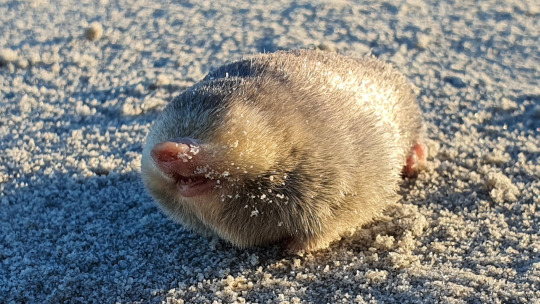
An elusive little mammal was spotted for the first time in nearly a century
Species Concerned: De Winton's Golden Mole (Cryptochloris wintoni)
Family: Golden Mole Family (Chrysochloridae)
Source(s): here and here
A small, superficially mole-like animal seemingly found only in the area around Port Nolloth, South Africa, De Winton’s Golden Mole has long been feared to be extinct due to a total lack of confirmed sightings since 1937. This changed in November of 2023, when (after years of extensive searching) a De Winton’s Golden Mole was found alive for the first time in 87 years, and was photographed for the first time ever.
Though similar to moles in both appearance and behaviour, golden moles are actually part of a separate and only distantly related group of mammals known as Afrosoricidans (alongside tenrecs and otter shrews) that have independently developed mole-like bodies to exploit a similar ecological niche – with massive, shovel-like front paws, short limbs, protective “shields” of toughened skin on their heads and non-functional eyes covered by skin to protect them from irritation, members of this family are adapted to burrowing, and in most cases will spend their entire lives underground unless disturbed. Due to the scarcity of sightings very little is known about the biology of De Winton’s Golden Mole, but based on its sandy coastal habitat and the behaviours of its closest relative, the Van Zyl’s Golden Mole (Cryptochloris zyli) it is likely that members of this species live solitary lives and use their digging abilities to “swim” through sand, preying on insects and small vertebrates which they detect using unique structures in their inner ears that are highly sensitive to vibration.
In addition to conventional habitat surveys within De Winton’s Golden Mole’s presumed range, the team responsible for this species’ rediscovery also utilized several newer or more unusual strategies to search for their focal missing mammal, including thermal imaging to detect underground body heat and the testing of soil and sand in the area for eDNA (tiny amounts of genetic material that organisms leave in water, soil and on other surfaces, giving insight into which species are found in an area without having to actually spot them.)
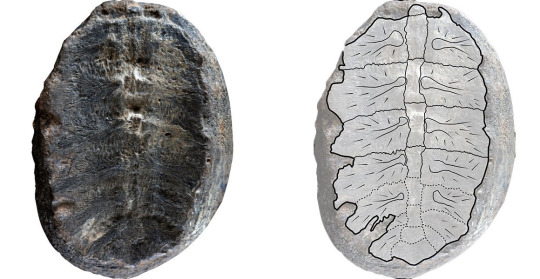
An "ancient plant" turned out to be a baby turtle
Species Concerned: "Turtwig" Cretaceous Turtle
Family: Unknown
Source(s): Here and Here
In 2003, a priest and fossil collector named Gustavo Huertas identified what he believed to be the fossilised remains of a tiny plant of the extinct genus Sphenophyllum in cretaceous-era rocks near Villa de Leyva, Columbia, and named the new species Sphenophyllum colombianum. Huertas' find was unusual in that it dated to the early Cretaceous period (making it over 100 million years younger than other Sphenophyllum species, the last of which are believed to have gone extinct in the late Triassic period,) and it was the fossil's unusual age that drew the attention of Fabiany Herrera, a curator of plant fossils at the Field Museum of Natural History in Chicago, USA and Héctor Palma-Castro, his student. After taking an interest in the fossil the two travelled to the Universidad Nacional de Colombia in Bogotá, Columbia where the fossil was held in order to inspect it, and after realising that its features were unlike other Sphenophyllum species and consulting a vertebrate palaeontologist, Edwin-Alberto Cadena, they eventually came to realise that what Huertas had found was not a Sphenophyllum species, or event a plant - what had originally been interpreted as the stems and leaves of a plant were actually the ribs of a very small, and likely very young, prehistoric turtle.
The ribs of turtles are located on the upper surface of their shells, where they form a sort of "roof" that strengthens the shell's outer carapace. Newly hatched turtles have fragile bones and shells that are easily broken beyond recognition during fossilization, so finding the well-preserved remains of a young turtle (estimated to be less than 1 year old when its bones were buried) is very rare. The discovery of the true identity of "Sphenophyllum colombianum" was published (here) in early December 2023, and as such the newly discovered turtle fossil has yet to be given a new name. Instead, it has been affectionately dubbed "Turtwig", after the half-plant-half-turtle gen 4 starter Pokemon, until it can be formally reclassified.
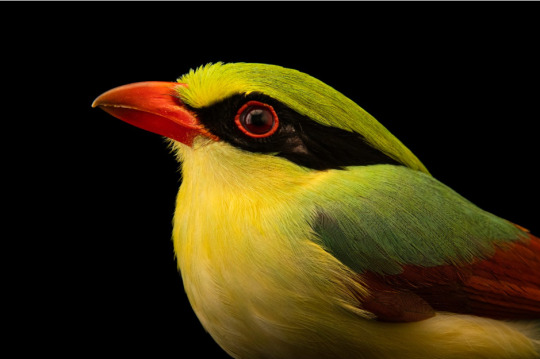
The Indochinese Green Magpie became the Photo Ark's 14,000th species
Species Concerned: Indochinese Green Magpie (Cissa hypoleuca)
Family: Crow Family (Corvidae)
Source: Here
The National Geographic Photo Ark is an ambitious project led by Canadian photographer Joel Sartore which aims to photograph every species held in captivity worldwide, providing high-quality images of often relatively obscure species and raising awareness of each species involved. In 2021 the Arabian Cobra became the 12,000th species added to the ark, in 2022 the Spoon-Billed Sandpiper became the 13,000th, and as of May 2023 the Indochinese Green Magpie has become the 14,000th species Sartore and his team have photographed.
Unlike the vast majority of crow species, the 4 species in the genus Cissa, known collectively as green magpies, are brightly coloured, largely carnivorous birds with vivid green feathers and bright red beaks and feet which are thought to aid them in camouflaging against the leaves and bark of the dense, humid forests they typically inhabit. The Indochinese Green Magpie, which is found in densely forested areas from central China to southern Cambodia, is one of the most common green magpie species, but is still believed to be experiencing a decline in population size due to the intense demand for members of this species in the illegal wildlife trade, both for their feathers and to be kept as illegal pets. The model for Sartore's photo, a female named Jolie, was herself found in a suitcase that was intercepted while being smuggled through the Los Angeles International Airport, and is now kept Los Angeles Zoo and Botanical Gardens. The team behind the Photo Ark have expressed hopes that Jolie's picture and story will help to raise awareness of the harmful effects of the illegal exotic pet trade and its prominence within the USA. On a happier note, the photo also seems to show that Jolie is now doing well - green magpies kept in captivity have been known to sometimes take on a duller colouration due to a lack of carotenoids in their diet, so her natural green feathers are an indicator of good health.

A very rare, very weird plant was rediscovered after 30 years
Species Concerned: Thismia kobensis
Family: Burmannia Family (Burmanniaceae)
Source(s): Here, here and here
In 1992, a bizarre-looking plant was found growing near the city of Kobe in Japan; pale and partially transparent without any leaves or chlorophyll, it was a member of the genus Thismia and was notable for being found further north than any other Asian species in the genus to date. A single plant was collected and taken to the Museum of Nature and Human Activities in the nearby city of Sanda, and in 2018 extensive examination of this single preserved plant led to it being determined to be a previously undocumented species, Thismia kobensis. This discovery led to surveys being dispatched to the area where the species was originally discovered in hopes of gathering additional samples and learning more about T. kobensis in the wild, but after surveys of the area were unable to find any remaining individuals, and following the discovery that the site from which the original sample had been collected had been converted into an industrial complex since the 1990s, the species was feared to have gone extinct. In February of 2023, a team of researchers led by Kobe University's Professor Kenji Suetsugu announced the first documented sighting of Thismia kobensis in 31 years, having found a small population growing in Sanda, not far from the museum that holds what had long been the only known specimen of the species and roughly 30km (18.6 miles) from the site at which the species was originally discovered. Their publication can be read here.
Thismia species, also known as fairy lanterns, are almost alien-looking plants that, as mentioned previously, lack chlorophyll and do not carry out photosynthesis, instead gaining nutrients parasitically by connecting their roots to the hyphae of typically mutualistic fungi and extracting nutrients from both the fungus itself and from any other plants that it has connected to (making it a mycoheteroph, much like the slightly better-known ghost plant/ghost pipes.) This unusual lifestyle likely developed as an adaptation to allow members of this genus to survive in forests with dense canopies that block out sunlight, but also makes them highly sensitive to environmental change - in order for an area to support a healthy population of Thismia kobensis, it must also support healthy trees and healthy soil fungi. As the original preserved 1992 specimen of T. kobensis was long dead and slightly damaged, its rediscovery also allowed Suetsugu's team to further study the species, leading to a surprising conclusion - genetically and anatomically, Thismia kobensis seems to have more in common with Thismia americana (the only known North American species of Thismia, which was last sighted in 1916 and is similarly feared extinct) than to any other Asian Thismia, possibly suggesting that T. kobensis and T. americana are descended from common ancestors that spread either from Asia to the Americas or vice versa during a time when their ranges were connected by a land bridge.
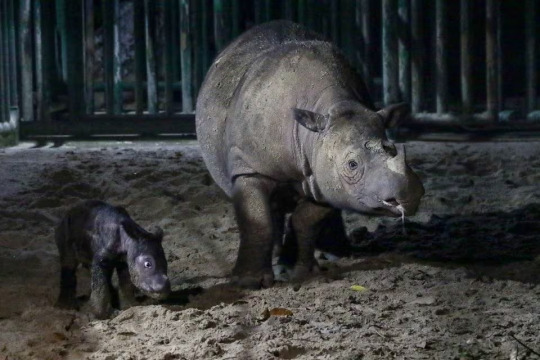
Important progress was made in saving the Sumatran Rhinoceros
Species Concerned: Sumatran Rhinoceros (Dicerorhinus sumatrensis)
Family: Rhinoceros Family (Rhinocerotidae)
Sources: Here and here
Distinguished from the other 4 rhinoceros species by its relatively small size, 2 horns and short black fur (which is barely present in adults, but very prominent in calves) the Sumatran Rhinoceros is one of the rarest mammals on earth, with an estimated population size of roughly 30-80 individuals. Having had its numbers drastically reduced by poaching, habitat loss and extreme weather events, the species is now threatened by its own small population size - found only in tiny scattered populations across Sumatra and Borneo, it is now extremely difficult for wild members of this species to find mates, and where mating does occur such a small population size considerably limits genetic diversity, increasing the risk of calves being born with health complications. To combat this numerous efforts to breed Sumatran Rhinoceroses in captivity have been developed, and as of November of 2023 the results have been promising; last year saw the birth of 2 Sumatran Rhinoceros calves at the Way Kambas National Park in Lampung, Sumatra.
The youngest of 2023's calves, a male, is the son of a female named Delilah who was herself the second calf to have ever been born at the park's Sumatran Rhinoceros Sanctuary (a site where members of this species are cared for and protected from illegal poaching while breeding.) This marks the first-ever instance of a captive-born Sumatran Rhinoceros giving birth, and therefore represents a key step in establishing a healthy captive breeding population of Sumatran Rhinoceroses to help preserve and increase the genetic diversity of wild populations. The calf's father, named Harapan, was born in Cincinnati Zoo in the USA, and it is hoped that the careful incorporation of the handful of Sumatran Rhinoceroses held in zoos into wild breeding programs can further help to increase the species' genetic diversity in the future. While extensive action is still needed for the Sumatran Rhinoceros to be saved, the park's work this year represents a significant step towards the species' conservation.
--------------------------------------------
Have a great new year!
#Happy new year!#2023#2024#zoology#biology#mammalogy#paleontology#botany#ornithology#conservation#animal#animals#plant#plants#wildlife#turtwig#de winton's golden mole#golden mole#golden moles#Indochinese green magpie#green magpie#green magpies#Thismia kobensis#Thismia#Sumatran rhinoceros#rhinoceros#rhinoceroses
36 notes
·
View notes
Video
White-necked Jacobin by Adam Rainoff
Via Flickr:
Capturing the White-necked Jacobin (Florisuga mellivora) in its natural habitat at Birdwatch La Conchita near Cali, Colombia, provided a remarkable opportunity to explore and document the vibrant dynamics of avian life. The photograph showcases this striking bird in mid-flight, its deep blue hood and green upperparts set against a softly blurred green background. Utilizing a shallow depth of field, I was able to isolate the bird from the surrounding foliage, emphasizing the brilliant coloration and intricate feather details that make the White-necked Jacobin a subject of endless fascination. From a technical standpoint, shooting this image required patience and a high shutter speed to freeze the rapid wing movement, capturing a moment of pure, ephemeral grace. Lighting played a crucial role, enhancing the iridescent quality of the bird's plumage. This image not only reflects my passion for avian photography but also underscores the importance of precision and timing in wildlife photography. It's a testament to the serene moments of nature that are often hidden in plain sight, waiting to be immortalized through the lens. ©2021 Adam Rainoff Photographer
#Cali#Valle del Cauca#Colombia#White-necked#Jacobin#Florisuga#mellivora#hummingbird#Birdwatch#La#Conchita#wildlife#nature#conservation#photography#birdwatching#tropical#travel#vibrant#color#green#blue#iridescent#feathers#flight#action#capture#fast#shutter#biodiversity
9 notes
·
View notes
Text
The Ig Nobel Prize, for scientific research that makes people laugh and then makes them think. This year's winners!
CHEMISTRY and GEOLOGY PRIZE [POLAND, UK]
Jan Zalasiewicz, for explaining why many scientists like to lick rocks.
REFERENCE: “Eating Fossils,” Jan Zalasiewicz, The Paleontological Association Newsletter, no. 96, November 2017. Eating fossils | The Palaeontological Association (palass.org)
WHO TOOK PART IN THE CEREMONY: Jan Zalasiewicz
LITERATURE PRIZE [FRANCE, UK, MALAYSIA, FINLAND]
Chris Moulin, Nicole Bell, Merita Turunen, Arina Baharin, and Akira O’Connor for studying the sensations people feel when they repeat a single word many, many, many, many, many, many, many times.
REFERENCE: “The The The The Induction of Jamais Vu in the Laboratory: Word Alienation and Semantic Satiation,” Chris J. A. Moulin, Nicole Bell, Merita Turunen, Arina Baharin, and Akira R. O’Connor, Memory, vol. 29, no. 7, 2021, pp. 933-942. doi.org/10.1080/09658211.2020.1727519
WHO TOOK PART IN THE CEREMONY: Chris Moulin, Akira O’Connor
MECHANICAL ENGINEERING PRIZE [INDIA, CHINA, MALAYSIA, USA]
Te Faye Yap, Zhen Liu, Anoop Rajappan, Trevor Shimokusu, and Daniel Preston, for re-animating dead spiders to use as mechanical gripping tools.
REFERENCE: “Necrobotics: Biotic Materials as Ready-to-Use Actuators,” Te Faye Yap, Zhen Liu, Anoop Rajappan, Trevor J. Shimokusu, and Daniel J. Preston, Advanced Science, vol. 9, no. 29, 2022, article 2201174. doi.org/10.1002/advs.202201174
WHO TOOK PART IN THE CEREMONY: Te Faye Yap and Daniel Preston
PUBLIC HEALTH PRIZE [SOUTH KOREA, USA] Seung-min Park, for inventing the Stanford Toilet, a device that uses a variety of technologies — including a urinalysis dipstick test strip, a computer vision system for defecation analysis, an anal-print sensor paired with an identification camera, and a telecommunications link — to monitor and quickly analyze the substances that humans excrete.
REFERENCE: “A Mountable Toilet System for Personalized Health Monitoring via the Analysis of Excreta,” Seung-min Park, Daeyoun D. Won, Brian J. Lee, Diego Escobedo, Andre Esteva, Amin Aalipour, T. Jessie Ge, et al., Nature Biomedical Engineering, vol. 4, no. 6, 2020, pp. 624-635. doi.org/10.1038/s41551-020-0534-9
REFERENCE: “Digital Biomarkers in Human Excreta,” Seung-min Park, T. Jessie Ge, Daeyoun D. Won, Jong Kyun Lee, and Joseph C. Liao, Nature Reviews Gastroenterology and Hepatology, vol. 18, no. 8, 2021, pp. 521-522. doi.org/10.1038/s41575-021-00462-0
REFERENCE: “Smart Toilets for Monitoring COVID-19 Surges: Passive Diagnostics and Public Health,” T. Jessie Ge, Carmel T. Chan, Brian J. Lee, Joseph C. Liao, and Seung-min Park, NPJ Digital Medicine, vol. 5, no. 1, 2022, article 39. doi.org/10.1038/s41746-022-00582-0
REFERENCE: “Passive Monitoring by Smart Toilets for Precision Health,” T. Jessie Ge, Vasiliki Nataly Rahimzadeh, Kevin Mintz, Walter G. Park, Nicole Martinez-Martin, Joseph C. Liao, and Seung-min Park, Science Translational Medicine, vol. 15, no. 681, 2023, article eabk3489. doi.org/10.1126/scitranslmed.abk3489
WHO TOOK PART IN THE CEREMONY: Seung-min Park
COMMUNICATION PRIZE [ARGENTINA, SPAIN, COLOMBIA, CHILE, CHINA, USA]
María José Torres-Prioris, Diana López-Barroso, Estela Càmara, Sol Fittipaldi, Lucas Sedeño, Agustín Ibáñez, Marcelo Berthier, and Adolfo García, for studying the mental activities of people who are expert at speaking backward.
REFERENCE: “Neurocognitive Signatures of Phonemic Sequencing in Expert Backward Speakers,” María José Torres-Prioris, Diana López-Barroso, Estela Càmara, Sol Fittipaldi, Lucas Sedeño, Agustín Ibáñez, Marcelo L. Berthier, and Adolfo M. García, Scientific Reports, vol. 10, no. 10621, 2020. doi.org/10.1038/s41598-020-67551-z
WHO TOOK PART IN THE CEREMONY: María José Torres-Prioris, Adolfo García
MEDICINE PRIZE [USA, CANADA, MACEDONIA, IRAN, VIETNAM]
Christine Pham, Bobak Hedayati, Kiana Hashemi, Ella Csuka, Tiana Mamaghani, Margit Juhasz, Jamie Wikenheiser, and Natasha Mesinkovska, for using cadavers to explore whether there is an equal number of hairs in each of a person’s two nostrils.
REFERENCE: “The Quantification and Measurement of Nasal Hairs in a Cadaveric Population,” Christine Pham, Bobak Hedayati, Kiana Hashemi, Ella Csuka, Margit Juhasz, and Natasha Atanaskova Mesinkovska, Journal of The American Academy of Dermatology, vol. 83, no. 6, 2020, pp. AB202-AB202. doi.org/10.1016/j.jaad.2020.06.902
WHO TOOK PART IN THE CEREMONY: Christine Pham, Natasha Mesinkovska, Margit Juhasz, Kiana Hashemi, Tiana Mamaghani
NUTRITION PRIZE [JAPAN]
Homei Miyashita and Hiromi Nakamura, for experiments to determine how electrified chopsticks and drinking straws can change the taste of food.
REFERENCE: “Augmented Gustation Using Electricity,” Hiromi Nakamura and Homei Miyashita, Proceedings of the 2nd Augmented Human International Conference, March 2011, article 34. doi.org/10.1145/1959826.1959860
WHO TOOK PART IN THE CEREMONY: Homei Miyashita, Hiromi Nakamura
EDUCATION PRIZE [CHINA, CANADA, UK, THE NETHERLANDS, IRELAND, USA, JAPAN]
Katy Tam, Cyanea Poon, Victoria Hui, Wijnand van Tilburg, Christy Wong, Vivian Kwong, Gigi Yuen, and Christian Chan, for methodically studying the boredom of teachers and students.
REFERENCE: “Boredom Begets Boredom: An Experience Sampling Study on the Impact of Teacher Boredom on Student Boredom and Motivation,” Katy Y.Y. Tam, Cyanea Y. S. Poon, Victoria K.Y. Hui, Christy Y. F. Wong, Vivian W.Y. Kwong, Gigi W.C. Yuen, Christian S. Chan, British Journal of Educational Psychology, vol. 90, no. S1, June 2020, pp. 124-137. doi.org/10.1111/bjep.12549
REFERENCE: “Whatever Will Bore, Will Bore: The Mere Anticipation of Boredom Exacerbates its Occurrence in Lectures,” Katy Y.Y. Tam, Wijnand A.P. Van Tilburg, Christian S. Chan, British Journal of Educational Psychology, epub 2022. doi.org/10.1111/bjep.12549
WHO TOOK PART IN THE CEREMONY: Christian Chan, Katy Y.Y. Tam, Wijnand A.P. Van Tilburg
PSYCHOLOGY PRIZE [USA]
Stanley Milgram, Leonard Bickman, and Lawrence Berkowitz for experiments on a city street to see how many passersby stop to look upward when they see strangers looking upward
REFERENCE: “Note on the Drawing Power of Crowds of Different Size,” Stanley Milgram, Leonard Bickman, and Lawrence Berkowitz, Journal of Personality and Social Psychology, vol. 13, no. 2, 1969, pp. 79-82. psycnet.apa.org/doi/10.1037/h0028070
WHO TOOK PART IN THE CEREMONY: Len Bickman
PHYSICS PRIZE [SPAIN, GALICIA, SWITZERLAND, FRANCE, UK]
Bieito Fernández Castro, Marian Peña, Enrique Nogueira, Miguel Gilcoto, Esperanza Broullón, Antonio Comesaña, Damien Bouffard, Alberto C. Naveira Garabato, and Beatriz Mouriño-Carballido, for measuring the extent to which ocean-water mixing is affected by the sexual activity of anchovies.
REFERENCE: “Intense Upper Ocean Mixing Due to Large Aggregations of Spawning Fish,” Bieito Fernández Castro, Marian Peña, Enrique Nogueira, Miguel Gilcoto, Esperanza Broullón, Antonio Comesaña, Damien Bouffard, Alberto C. Naveira Garabato, and Beatriz Mouriño-Carballido, Nature Geoscience, vol. 15, 2022, pp. 287–292. doi.org/10.1038/s41561-022-00916-3
WHO TOOK PART IN THE CEREMONY: Bieito Fernandez Castro, Beatriz Mouriño-Carballido, Alberto Naveira Garabato, Esperanza Broullon, Miguel Gil Coto
27 notes
·
View notes
Text
Excerpt from this story from EcoWatch:
Following multiple scientific studies that have revealed that carbon offsets are not as reliable as once thought, the market value of carbon offsets has dropped by around 61% when compared to its near-peak value in 2022, a new report has found.
In early 2023, a major investigative report by The Guardian, Die Zeit and SourceMaterial found that the vast majority of forest carbon offset programs are actually “phantom credits” that don’t help remove any emissions from the atmosphere. A 2022 study that analyzed forest-based carbon offsets in California for a decade found no climate benefits from the offset programs in that time period. Yet another study, published in March 2023, found that many carbon offsetting programs weren’t using scientific best practices to calculate carbon credits, leading to over-estimates of the benefits of these programs.
Now, a report by the nonprofit Ecosystem Marketplace found that the voluntary carbon market (VCM) value has declined 61%, from $1.9 billion in 2022 to around $723 million in 2023. The carbon offset market value had peaked around 2021, when the value reached over $2 billion.
Since the peak, the value has decreased by about 56% year-over-year, Ecosystem Marketplace found.
Experts noted that to make carbon offsetting work, there will need to be more reliability and action from the carbon credit programs.
“If the VCM hopes to increase its mitigation potential and the value it provides to ecosystems and communities, especially those hosting [The Nature Conservancy] projects, it is imperative that the credit supply shows its integrity by shifting towards methodologies that use the best available science and social safeguards,” Maximiliano Bernal Temores, carbon markets assistant, Impact Finance & Markets at The Nature Conservancy, said in a press release.
“Crediting standards and project developers must incorporate best-science practices like dynamic baselines and remote sensing to ensure the VCM, especially nature-based credits, meets buyer expectations,” Temores added.
The once most popular type of credit, REDD+, had the biggest losses in 2023. The REDD+ stands for “reducing emissions from deforestation and forest degradation in developing countries” and is based on a United Nations framework.
But in 2023, researchers discovered that several REDD+ carbon credit projects in Peru, Colombia, Democratic Republic of Congo, Tanzania, Zambia and Cambodia did little to curb deforestation, and these projects had a much smaller impact on emissions reductions than they claimed, Forests News reported.
5 notes
·
View notes
Text
By Julia Conley
Common Dreams
May 17, 2024
"We had to add additional bleaching alert levels to appropriately categorize just how hot it was," said a coral reefs expert at the agency.
The phrase "off the charts" is no exaggeration in the National Oceanic and Atmospheric Administration's latest warning about a global coral bleaching event that scientists have linked to rising ocean temperatures and heat stress.
Derek Manzello, coordinator of NOAA's Coral Reef Watch Program, told reporters Thursday that about 60.5% of the world's coral reefs are now experiencing heat stress severe enough to cause bleaching, which can make the reefs more vulnerable to disease and harm the biodiversity they support.
Manzello said at the press briefing that after observing the first months of the coral bleaching event, which began in early 2023, NOAA changed its existing bleaching alert system because conditions were so abnormally warm in the Atlantic Ocean, Gulf of Mexico, and Caribbean Sea.
The agency's new bleaching alert system categorizes heat stress for coral reefs on a scale of 1-5, with Alert Level 5 representing ocean heat that could kill "approximately 80% or more of corals on a particular reef," Manzello said.
"We had to add additional bleaching alert levels to appropriately categorize just how hot it was," he said, with Level 5 "analogous to a Category 5 hurricane or cyclone."
"I hate that I have to keep using that word 'unprecedented.'... But, again, we are seeing unprecedented patterns again this year."
The world's oceans, Manzello, said, are going "crazy haywire."
In the Caribbean this year, heat stress off the coasts of Panama, Costa Rica, Nicaragua, and Colombia are now at levels that in previous years weren't seen until the summer months.
"I hate that I have to keep using that word 'unprecedented,'" Manzello told The New York Times. "But, again, we are seeing unprecedented patterns again this year."
The bleaching that took place last year resulted in coral mortality of at least 50% and as high as 93% in reefs off the coast of Huatulco, Mexico, according to a team of Mexican scientists.
In the Atlantic, fossil fuel-driven planetary heating has been exacerbated by El Niño—the natural phenomenon that causes warmer-than-normal ocean surface temperatures—and has caused the "most unprecedented and extreme" bleaching-level heat stress observed in the past year.
Manzello said 99.7% of reef areas in the Atlantic have experienced heat stress that could cause bleaching.
"The Atlantic Ocean has been off the charts," he said.
Scientists have recorded four global bleaching events since 1998 and have linked all of them to warmer ocean temperatures. Since 1950, the world has lost half of its coral reefs, according to a 2021 study.
Along with serving marine life, a quarter of which rely on coral reefs at some point in their life cycles, reefs also protect coasts from storms, whose growing severity in recent years scientists have also linked to planetary heating.
The current bleaching event has affected reefs off the coasts of at least 62 countries and territories.
Scientists earlier this year confirmed that 2023 was the hottest year in human history and the warmest year on record for the world's oceans, which absorb more than 90% of excess heat from greenhouse gas emissions.
"I am very worried about the state of the world's coral reefs," Manzello said. "We are seeing [ocean temperatures] play out right now that are very extreme in nature."
6 notes
·
View notes
Photo

What is human warfare but just this; an effort to make the laws of God and nature take sides with one party.
- Henry David Thoreau
**A student performs 'Who killed them' during anti-government protests in Cali, Colombia, on May 11, 2021. At least 42 people, including a uniformed officer, died in Colombia as part of the anti-government protests.
#thoreau#henry david thoreau#quote#war#femme#warfare#human nature#conflicts#civil unrest#society#culture#colombia
27 notes
·
View notes
Text
Travel Demand For Brazil Is Skyrocketing – Here’s Why Americans Love It

Brazil may be the largest country by territorial extension in South America, home to a plethora of natural landmarks that need to be seen to be believed, and a vibrant multicultural scene. Despite its huge size and potential, it is not the most sought-after destination in the continent, being easily overshadowed by Argentina, Colombia, and Chile in terms of arrival numbers – but this could soon change.
According to the latest survey carried out by the Brazilian Ministry of Tourism, which tracks tourism trends across the country’s top destinations, Brazil hosted more than 3.63 international tourists in 2022, still lower than the pre-pandemic levels of around 5 million, but a 500% increase compared to 2021.
Compared to 2019, the South American giant remains 43% below expected levels, but this sharp rebound is laudable, nonetheless. Despite never shutting down its borders for inbound travelers for the best part of the pandemic, Brazil took a hard hit from COVID, scaring away potential customers as deaths soared and infections spiraled out of control.
Continue reading.
#brazil#politics#economy#tourism#travel#brazilian politics#mod nise da silveira#image description in alt
3 notes
·
View notes
Text
Virgen dela Pena, Bogota, Colombia

On 10 August 1685, Bernardino Rodríguez de León “saw a great and unusual radiance that was not the natural light of day” in the peaks east of Bogotá. On drawing near, he realised the light was coming from an image of an Angel, the Virgin and Child and St Joseph, outlined in the living rock. .
News of the discovery soon spread throughout the Capital and after an investigation, the Archbishop authorised the construction of a Chapel on the mountainside and public veneration on the Sunday before Ash Wednesday of 1686. The thatched Chapel collapsed in 1714 and a sturdier stone building took its place. Mysteriously, people began to see Our Lady’s face change expression – sad, tearful, joyous. On 8 May 1716, the left wall of the Chapel collapsed to its foundation, after only 150 days. It was decided to move the images from the mountain. In early June, stonemason Luis de Herrera began separating the images from the underlying rock. Legend relates that when he finished, a bird flew out. The images were cleaned, polished and touched up to make the figures and clothing more distinct. They still weighed 750 pounds. In November, men carried them on their shoulders to the plain, where they were greeted with rejoicing and dancing. Another straw shelter protected the statues until completion of a new Chapel in 1722. Now a national monument, Our Lady of the Crag is still a very active Church and an Archdiocesan Sanctuary.


Reference:
https://anastpaul.com/2021/08/10/feast-of-st-lawrence-virgen-de-la-pena-our-lady-of-the-crag-bogota-colombia-1685-and-memorials-of-the-saints-10-august/comment-page-1/
https://es.wikipedia.org/wiki/Iglesia_de_Nuestra_Se%C3%B1ora_de_La_Pe%C3%B1a_(Bogot%C3%A1)#:~:text=La%20Iglesia%20de%20Nuestra%20Se%C3%B1ora%20de%20la%20Pe%C3%B1a,la%20jurisdicci%C3%B3n%20eclesi%C3%A1stica%20de%20la%20arquidi%C3%B3cesis%20de%20Bogot%C3%A1.
8 notes
·
View notes
Text



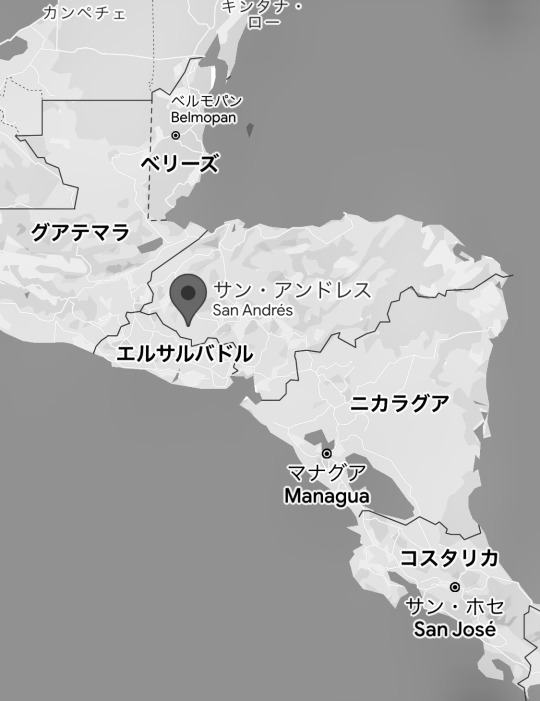
.
Special BEANS from our partner roaster COFFEE COUNTY @coffeecounty .
スペシャルなホンジュラスがラインナップしました✋
ーーーーー
ー
◼︎ HONDURAS Finca Los Pinos
FLAVOR NOTE: Elder flower, Sparkling wine, Rosemary, Pink grapefruit, Muscat, Minty, Yogurt scotch, Exotic
.
VARIETY: Typica
PROCESS: Natural
AREA: Esquimpara, San Andres, Lempira
PRODUCER: Orlando Carbajal
ALTITUDE: 1650 m
.
Orlando Carbajal氏はCOFFEE COUNTYにとって最も重要な生産者の1人です。
2014年から3年ほど毎年農園を訪ね彼のコーヒーの取り扱いをしてきました。Caturra、Indio、Colombia、IHCAFE90 等取り扱ってきましたがこのTypica種は当初より氏自慢のコーヒーで過去に2度取り扱いがありますが生産量が100kg程度と大変少ないものでした。そんなTypica種を日本に初めて紹介した人物として彼は今でも(COFFEE COUNTY)オーナー森氏の名前を語ります。
2016年の訪問時、氏はこのティピカ種の栽培面積を増やしていました。そして収穫量が増えてきた2018年 Cup of Excellenceに初出品するやいなや、2位という輝かしい実績を手にし一躍注目の的に。唯一無二のフレーバーを持ったこのコーヒーは、世界中にその名が知れ渡り、いまやTypica・Carbajalと評されるまでになりました。
2019年は6位と9位に同じTypica種で入賞しており、2年連続の上位入賞、この時 森氏もCOE 審査会に参加しており、Orlando氏と受賞の喜びを分かち合う事ができました。2021年、2年ぶりに行われたCup of Excellence では2位と3位に同Typica種(NaturalとHoney)が輝き、2022年は9位、11位に。
一般的なTypica種とは一線を画すコーヒーで 外観、風味ともGeisha種に近いものを感じさせます。さらにエキゾチックなフルーツ感を併せ持ち、今季買い付けのNaturalのロットからはスパークリングワインのような風味、ローズマリーのようなハーブ香を感じ、あとに続く甘さはお馴染みヨーグルトキャンディのよう。このTypica種にしか無い特別な味わいを是非お楽しみください!
(COFFEE COUNTY)
➖➖➖➖➖
☕️ Single Origin Coffee Line-up
[Single O]
C) RESERVOIR House Blend - Tanzania, India
T) GUATEMALA Finca El Socorro - Variety Series: Purpuracea ←残りわずか
T) GUATEMALA Finca El Socorro - Variety Series: Laurina ←Last 2 shots
T) HONDURAS Finca Quesaquire
[Coffee County]
H) HONDURAS Finca Los Pinos - Typica Natural
T) COLOMBIA Finca Los Nogales
[Sommarlek Coffee]
次回入荷を楽しみにしていてください
[FLOWER COFFEE / BREW BAR]
焙煎調整中
ー
Categories
T) The Specialty ...Terroir
C) Conceptual ...Sorting, Technology transfer
N) New Wave ...Innovative approach
S)) Special ...Winning lot, Top specialty
➖➖➖➖➖➖➖➖➖➖
FLOWER COFFEE / BREW BAR
Weekday: 10:00 - 19:00 (ESP L.O. 18:45)
Weekend & Holiday: 9:00 - 18:00 (ESP L.O. 17:45)
店舗休: 2月: 22日
.
※ 警戒レベル3以上の悪天が見込まれる場合には予報に沿って営業スケジュールを調整します(なるべく早く店頭張り紙、SNS、Googleにて情報発信します)
ーーーーーーーーーー
神奈川県茅ヶ崎市東海岸北1-7-23 雄三通り
🚃 JR茅ヶ崎駅 歩8分
🚲 駐輪可 3台まで
🚗 駐停車不可(近隣駐車場をご利用ください、参考: 三井リパーク ¥200-/h)
🦠 県の要請に応じ マスク飲食を推奨しています
ーーー
#thanxalways #speialbeans #coffeecounty #honduras #lempira #lospinos #orlandocarbajal #typica #natural
.
#specialtycoffee #singleorigin #coffee #singleo #sommarlekcoffeeroaster #hario #takahiro #mahlkonig #ditting #lamarzocco #pesado #origami #kinto #flowercoffeebb #everydaybeautiful #shonan #chigasaki #yuzostreet
2 notes
·
View notes
Text
Sophie Lewis on Abolishing the Family

I’m sure that many people coming out of this holiday season, returning from visiting relatives will wonder: “couldn’t we abolish the capitalist family structure?” We’ve got great news! We’re happy to present this conversation between Scott and Sophie Lewis, author of Abolish The Family: A Manifesto of Care and Liberation.
In this episode, Sophie speaks about the book, the ideas and inspirations she’s pulling from, the critique that the family form not only passes property and generationally allows concentrations of it, but simultaneously limits our horizons of care to these small, private and often abusive relationships. Here we also find ideas of Child Liberation, a challenge to the state form and capitalism, and an invitation to imagine beyond what we’ve been taught is the natural nucleus of human relationships in what turns out to be a long lineage of ideas cast back through Black feminisms of the 70’s and beyond.
Anyway, there was a lot here and we hope you enjoy. For a related chat, check out Scott’s July 10, 2022 interview with Sophie on the show, and you can find more recordings and essays at her site, LaSophieLle.org and support her freelance writing on her patreon.
Next Week…
Stay tuned next week, possibly for a chat between Scott and Rhiannon Firth on their recent book, Disaster Anarchy: Mutual Aid and Radical Action.
Announcements
Blue Ridge ABC Letter Writing
If you’re in the Asheville area, Blue Ridge ABC will be hosting a letter writing at Firestorm Books on Sunday, January 8th from 3-5pm. Usually, this’d take place the first Sunday of the month but that’d fall on New Years Day and that didn’t feel realistic.
Colombia Freedom Collective
There is an urgent fundraising appeal from the Colombia Freedom Collective as trails approach for the Paso Del Aguante 6, political prisoners from the uprising against police impunity and murder in 2021. You can learn more at ColombiaFreedomCollective.org
. … . ..
Featured Tracks:
It’s Like Reaching For The Moon by Billie Holiday from Lady Day: The Complete Billie Holiday On Columbia 1933-1944 (CD1)
War Within A Breath by Rage Against The Machine from The Battle of Los Angeles
Check out this episode!
4 notes
·
View notes
Text

He compartido 1242 publicaciones este 2022
¡Son 1242 más que en 2021! <- relax man this blog didn't exist last year lol
69 publicaciones originales (6 %)
1173 reblogueos (94 %)
Estos son los blogs que más he reblogueado:
@encantowishes
@naoko-world
@glitternightingale
@waitingonavision
@lvnamuraart <- this is embarasing ups
He etiquetado 740 publicaciones en 2022
Solo el 40 % de mis publicaciones no incluye ninguna etiqueta
#bruno madrigal: 252 publicaciones
#pepa madrigal: 157 publicaciones
#julieta madrigal: 121 publicaciones
#isabela madrigal: 89 publicaciones
#mirabel madrigal: 80 publicaciones
#my art: 61 publicaciones
#dolores madrigal: 55 publicaciones
#madrigal triplets: 50 publicaciones
#encanto: 49 publicaciones
#camilo madrigal: 43 publicaciones
Longest Tag: 138 characters
#the tall bruno i know had a lot of makeup for the eyes and i had a crisis because............... some people don't have natural eye bags??
Mis publicaciones más populares este 2022:
5
Did you know that in spanish we have many expressions with milk? I don't think it's a thing in Colombia, maybe only here in Spain, but forgive me for taking the opportunity to do a silly comic.


Descúbrela
115 notas. Fecha de publicación: 25 de julio de 2022
4

New storyboards by Ryan Green!
There are a lot of scenes with Luisa, but I'm biased, these two……….
121 notas. Fecha de publicación: 27 de junio de 2022
3
Headcanon about Julieta: her magic is in the act of giving the food to someone
Following my last drawing, I want to talk a little about my headcanon. As I said, I don't think her healing magic *is* her cooking. Why would she spend her days in the town waiting for the people to come to her? She could, Idk, send any of the kids, or just set the table with the food and go on with her day.
We have the townspeople...

Descúbrela
132 notas. Fecha de publicación: 21 de abril de 2022
2
Also, speaking of the Encanto's merch, why did they decide to do a generic jaguar plush when they could do one with Mirabel's style!!!!
I mean!! Super generic, the safe move, boring (I'm sorry Parce!!):

That's the cutest fucking thing I've ever seen in my entire life:
Descúbrela
146 notas. Fecha de publicación: 29 de abril de 2022
Mi publicación más popular de 2022
I don't know about you, but I fear the day that we have a canon sexuality for Bruno because whatever it is, some people will be angry.
I see a lot of people with OCs that are ladies, so I suspect that they want Bruno to like girls. Then you have people who watch him and read his story as the gay uncle whose name the family don't speak, so, achillean. And I think the option of aro and/or ace is popular too? And right now everyone is having a great time with their headcanons, everything is valid.
But Jared Bush doesn't want to answer anything about this topic. He is doing that with the things they want to explore in the future. And yeah, I can imagine the grandkids asking why he is single. They'll make a canon story about that. And some people will be disappointed or angry.
My worst fear? I'm ok with everything, but I guess I can't trust Disney (talking about the company, not the people actually making the movie and trying their best).
I would love Bruno being aro/ace. I crave asexual representation. The A spectrum is so big, they can try so many options (I usually think about him like an ace with a tentative interest in romance). But. Can I trust them to do a nice representation? And, can I trust the fandom who see him as alosexual to be ok with it? Because, I don't want to think bad, but I watched so many dramas in other fandoms... I'm not ready to read more shit about us. I can't do that anymore, I'm tired.
Bruno being gay? Amazing. I love the idea. Beloved character being achillean, nice. But we are talking about Disney. Every year we have a new "the first openly gay person in a disney movie!!!" and is always a background character saying one line or kissing their partner really fast, super easy to cut if they need it. I don't know about the situation in other countries, but here in Spain there is a group of people who are trying to boycott Lightyear because Oh No TwO wOmEn KiSsEd. Encanto is SUPER popular. Bruno is very popular. Some people will be so angry if he is gay. Would Disney risk their public opinion for this? Uuuh.
And if he is hetero or at least they show him having interest in women... It's ok! The movie is not about LGBTQ+ experiences, I don't expect Disney to try more representations after using the "latino representation card" (Too much for them, they'll cry). And we’ll have more opportunities with the rest of the family if we are lucky. But if they go with "he wanted but everyone was wary of him, so Bruno couldn't find a girl" ..... I'll die if the incel community find him relatable or something like that 💀 Or... Imagine if they use Bruno being neurodivergent as the excuse of why no woman wanted to marry him, because he is "strange". More 💀💀
So yeah, I don't know. I'm happy right now. Everyone is having fun. You can read/write about any option or ignore the topic completely. But some day...
176 notas. Fecha de publicación: 28 de junio de 2022
Descubre tu resumen del 2022 en Tumblr →
#tumblr2022#resumen del año#mi resumen del 2022 en tumblr#tu resumen del año en tumblr#year in review#my 2022 tumblr year in review#your tumblr year in review
3 notes
·
View notes
Video
Andean Emerald by Adam Rainoff
Via Flickr:
In this photograph, the Andean Emerald (Uranomitra franciae) graces the lens with its presence, captured in the tranquil settings of Birdwatch La Conchita near Cali, Colombia. This image highlights the bird's striking features: a shimmering blue crown and vibrant emerald cheeks, which stand out against a soft, uniform green backdrop. The deliberate use of a shallow depth of field focuses attention on the bird's detailed plumage, while the diffuse background enhances the subject’s radiant colors without distraction. From a photographer's perspective, capturing the subtle interplay of light on the iridescent feathers of the Andean Emerald was both a challenge and a delight. Timing and lighting were crucial to accentuate the textures and hues, requiring patience and precise adjustments. This image was shot during the golden hour, which provided a warm, natural glow that beautifully illuminated the bird. The result is a portrait that not only showcases the beauty of this species but also demonstrates the power of photography to reveal the extraordinary details of nature's artistry. ©2021 Adam Rainoff Photographer This photo is a testament to the moments of connection between nature and photographer, captured forever through the lens.
#Cali#Valle del Cauca#Colombia#Andean#Emerald#Uranomitra#franciae#hummingbird#Birdwatch#La#Conchita#nature#wildlife#conservation#photography#birdwatching#tropical#travel#vibrant#color#green#blue#iridescent#feathers#flight#action#capture#fast#shutter#biodiversity
6 notes
·
View notes
Text
Fruit Fiber Market - Forecast (2022-2027)
Fruit Fiber Market size is estimated to reach $356.7 million by 2027, growing at a CAGR of 4.2% during the forecast period 2022-2027. Fruit fiber is a mixture of fibers (soluble or insoluble) derived specifically from fruit such as apple, passion fruit, banana, orange, grapefruit, and many more. Fibers extracted from fruit like bananas, sugarcane, coconut, and pineapple are widely used in textile fabrics. Besides, Guar gum is a renowned vegetable fiber resulting from guar beans. It plays a significant role as a stabilizer and thickener in food applications. Also, microcrystalline cellulose extracted from wood pulp is used in pharmaceuticals as an excipient. Fiber-rich fruit helps in the absorption of water from digestive juices in the gut and reduces food intake over time; therefore, they are quite significant when it comes to weight management. Owing to the presence of lactic acid, fruit fibers also depress the risk of gastrointestinal infections, ease defecation, promote the health of the heart and digestive system, and reduce bad cholesterol levels. Furthermore, increasing disposable incomes, broadening health attentiveness among consumers, and swelling prevalence of chronic diseases are factors set to drive the growth of the Fruit Fiber Global Market for the period 2022-2027.

Report Coverage
The report: “Fruit Fiber Market Forecast (2022-2027)”, by Industry ARC, covers an in-depth analysis of the following segments of the Fruit Fiber Global Market.
By Fruit Type: Passion, Banana, Blueberry, Plum, Apple, Cranberry, and Others.
By Properties: Soluble and Insoluble.
By Application: Textile fabrics, Pharmaceuticals, Dietary Supplements, Animal feed, Food & Beverages, and Others.
By Geography: North America (U.S., Canada, and Mexico), Europe (Germany, UK, France, Italy, Spain, Russia, and Rest of Europe), Asia-Pacific (China, India, Japan, South Korea, Australia & New Zealand, and Rest of Asia-Pacific), South America (Brazil, Argentina, Chile, Colombia and Rest of South America) and Rest of World (the Middle East and Africa).
Request Sample
Key Takeaways
Geographically, the North America Fruit Fiber Market accounted for the highest revenue share in 2021. The growth is owing to quality lifestyles, high purchasing power owing to prosperous economies, and health awareness among people.
Rising usage in food & beverages, a surge in the number of geriatrics, escalating merger and acquisition activities, expanding usage in the textile and pharmaceutical industry, broadening disposable income levels, and mounting prevalence of life-threatening complications such as heart attack, cancer, diabetes are said to be preeminent factors driving the growth of Fruit Fiber Global Market.
Jaw-dropping expansion in inflation rates, plummeting yield of fruit because of environmental calamities, and unemployment post-covid-19 are said to reduce the market growth.
Detailed analysis of the Strength, Weaknesses, and Opportunities of the prominent players operating in the market will be provided in the Fruit Fiber Global Market report.
Fruit Fiber Market Segment Analysis - By Fruit Type
The Fruit Fiber Global Market based on the fruit type can be further segmented into Passion, Banana, Blueberry, Plum, Apple, Cranberry, and Others. The orange and grapefruit segment held the largest share in 2021. Orange is eminent for its vitamin C and rich soluble fiber nature which plays a huge role when it comes to dipping cholesterol levels. Owing to the high amount of vitamin C, orange is preeminent in promoting collagen production which is an essential protein for skin health. In addition to that, orange has drawn an immense following among consumers because of its low caloric nature, ample varieties, and tangy flavor. Oranges are of utmost usefulness in reducing the risk of developing cancer and maintaining stable blood pressure. Also, grapefruit is proving to be quite a health-friendly choice because of the high number of antioxidants that inhibit tumor cells. Moreover, it promotes weight loss and overhauls prostate cell DNA. Nevertheless, the passion fruit segment is estimated to be projected to witness growth with a CAGR of 5.9% over the forecast period 2022-2027. This seedy and sweet fruit is a powerhouse of nutrients. The abundance of heart-healthy potassium and dietary fibers makes it an appropriate remedy for confiscating surplus cholesterol from blood vessels, therefore, supporting the segment growth.
Inquiry Before Buying
Fruit Fiber Market Segment Analysis - By Application
The Fruit Fiber Global Market based on application can be further segmented into Textile fabrics, Pharmaceuticals, Dietary Supplements, Animal feed, Food & Beverages, and Others. The food and beverage segment held the largest share in 2021. Fruit fibers play a significant role in moisture management and as an emulsifier in food and beverages. Beverages with soluble fibers on reaction with abdominal fluid form a gel and slow down the rate of digestion in order to expand the time span for the body to extract as many nutrients as it can. In baker confections, fibers derived from citrus fruits like grapefruit and orange act as a water binding agent and uphold the freshness of products over time by binding a large amount of water and oil and not releasing it over time. Furthermore, the textile segment is estimated to be the fastest-growing with a CAGR of 5.2% over the forecast period 2022-2027. This growth is owing to the soaring demand for fruit fibers as an essential raw material for developing textile fibers. For instance, pineapple fibers play a crucial role in the fabrication of non-woven, home textiles, and upholsteries. Owing to their anti-bacterial properties, cream color, and silk shine, the fruit fibers have started to replace jute in the textile industry, thus augmenting the segment growth in the near future,
Fruit Fiber Market Segment Analysis - By Geography
The Fruit Fiber Global Market based on Geography can be further segmented into North America, Europe, Asia-Pacific, South America, and the Rest of the World. North America held the largest share with 39% of the overall market in 2021. Owing to the rising food and beverage industry and massive population Asia-Pacific has the potential to lead the market but lack of awareness among people has not aided the market fully. However, the growth in the North American region is owing to the factors such as health proactiveness, high living standards of people, the astounding pervasiveness of obesity, and confounding demand for fortified food and beverages. Also, high urbanization rates and disposable incomes are other crucial factors accountable for the market hold in the said region. Nevertheless, Asia-Pacific is expected to be the fastest-growing segment over the forecast period 2022-2027. This growth is owing to the steep expansion in the number of geriatrics, enlarging gastrointestinal infections and other serious illnesses because of the quick adoption of modern lifestyles, and expanding textile industry of Bangladesh. Furthermore, jaw-dropping growth in the pharmaceutical industry of India and China, immense population, broadening size of the middle-class population, proliferating economic wealth of nations, and rapid migration of people from rural areas to urban areas are the factors thrusting the market growth.
Schedule a Call
Fruit Fiber Market Drivers
The startling surge in obesity and gastrointestinal infections is anticipated to boost market demand.
Obesity is directly proportional to the imbalance risen between expended and consumed calories. Over time this imbalance results in excessive fat and set grave health repercussions like diabetes and heart attack in motion. Consequently, the rise in prevalence of such illnesses has prompted people to make more demand for fruit fibers so that they can circumvent these threats. According to World Health Organization, as of 2022, over 1 billion people across the globe are facing the obesity problem. Out of these 1 billion, 650 million are adults, and teenagers and children are accounting for 340 million and 39 million respectively. Obesity has become a big headache for countries in Oceania such as Nauru, Cook Islands, Tonga, and others as the body mass index of these nations has crossed the mark of 30 which represent obesity of class 1. On another hand, the surge in gastrointestinal infections post-covid-19 is overwhelming. According to the National Center of Biotechnology Information, nearly 51.9 percent of the patients diagnosed with covid had gastrointestinal patients. Thus, these health issues generate a need for the consumption of fibers which in turn is anticipated to fuel market growth.
Growing fruit production, an upsurge in GDP per capita, and rapid urbanization are expected to boost market demand.
In the wake of sky-rocketing demand, the overall fruit production has soared globally. For instance, global banana production in 2020 was 119.83 million metric tons; whereas, apple production stood at around 86.44 million metric tons. China is the leading fruit producer with more than 242 million metric tons followed by India with more than 100 million metric tons of production. In addition to that, expanding purchasing power of people in developing nations because of rising economic affluence has propelled the demand for high-end fruits such as passion fruit driving the market growth. Manufacturing and exports are two important pillars of economic prosperity. In FY 22 India witnessed a record-breaking export worth $418 billion. The figure might be an appropriate justification for the soaring per capita income of the country. Therefore, these factors are going to play a gigantic role in the market growth.
Buy Now
Fruit Fiber Market Challenges
The environmental catastrophes and rising cost of living are anticipated to hamper the market growth.
Owing to widescale use of fertilizers to increase the yield of fruit drastically is adversely impacting the fertility of the soil. The organic content in the soil of major agriculture-dependent nations like India has plummeted sharply over the years. 2.5 percent to 3 percent organic content in soil is an international standard that represents healthy soil and fertile soil. However, the percentage has dipped to nearly 0.5 percent in croplands of northwest Indian states. On another hand, the rising cost of living because of unfortunate conflict in Europe is likely to challenge the import & export of the aforementioned market in turn impeding the market growth.
Fruit Fiber Industry Outlook:
Product launches, mergers and acquisitions, joint ventures, and geographical expansions are key strategies adopted by players in the aforementioned Market. Fruit Fiber Global market top 10 companies include:
Carlina Ingredients
Citrus Extracts LLC.
AGT Foods and Ingredients
CP Kelco Inc.
Fiberstar Inc.
Taiyo International
Royal DSM N.V.
Cargill Inc.
Tate & Kyle Plc.
DuPont de Nemours Inc.
For more Food and Beverage Market related reports, please click here
#Fruit Fiber Market price#Fruit Fiber Market size#Fruit Fiber Market share#Fruit Fiber Market trends#Fruit Fiber Market research#Fruit Fiber Market forecast#Fruit Fiber Market report
2 notes
·
View notes